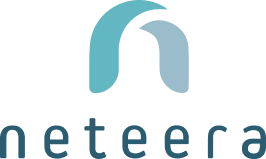The nursing shortage in the U.S. has reached critical levels, impacting the quality and safety of care nationwide. By 2022, the shortfall exceeded 1.1 million nurses, or 27% of the workforce, with numbers expected to rise further . This crisis, exacerbated by the COVID-19 pandemic, has forced hospitals to turn to costly short-term solutions like offering signing bonuses of up to $25,000 or relying on traveling nurses.
While these efforts provide temporary relief, they also strain healthcare systems, forcing staff nurses to leave their jobs for higher-paying travel assignments, creating a revolving door of caregiving gaps. As the crisis grows, it’s becoming clear that the shortage jeopardizes personalized care, increases patient risks, and overwhelms nurses.
Unsafe Nurse-to-Patient Ratios Are Compromising Care
An unsafe nurse-to-patient ratio can have devastating consequences. Studies show that:
- 5,000 in-hospital patient deaths and 60,000 adverse outcomes could be avoided annually if nurse staffing matched the best-staffed hospitals.
- For every additional surgical patient added to an RN’s workload beyond the ideal 1:4 ratio, the risk of death within 30 days increases by 7%.
Currently, California is the only state with regulated RN-to-patient ratios, and advocacy groups like National Nurses United are pushing for national mandates. Without such regulations, nurses are stretched beyond their capacity, leading to higher error rates, burnout, and reduced quality of care.
Time Constraints Are Undermining Personalized Care
The burden of vital sign monitoring
One of the most time-intensive tasks nurses perform is manually monitoring vital signs. It takes 6 minutes and 26 seconds per patient to collect and record vital signs. For a single nurse managing 10 patients, this could mean more than an hour per shift spent on this one task.
This process detracts from high-value activities like:
- Spending meaningful time with patients.
- Collaborating with physicians.
- Monitoring for early warning signs of health deterioration.
When critical fluctuations in vital signs are missed due to infrequent monitoring, patients face a higher risk of adverse outcomes, readmissions, or possibly even death.
The Role of Technology in Addressing the Crisis
Continuous monitoring supports improved workflows
Neteera’s continuous patient monitoring platform helps address some critical nursing shortage areas by automating time-consuming tasks and enabling real-time insights into patient health.
How Neteera supports nurses:
- Passive monitoring: Vital signs are tracked continuously, without requiring nurses to check devices or interact with patients physically.
- Real-time alerts: When vital signs fall outside of predefined parameters, nurses are instantly notified, allowing for timely interventions.
- Enhanced decision-making: Historical biodata offers a comprehensive view of a patient’s health, enabling personalized care plans based on trends and patterns.
Expanding clinical reach without overburdening nurses
The Neteera HealthGate dashboard centralizes patient data, allowing caregivers to monitor multiple patients simultaneously. The real-time display of patient vitals helps nurses detect early warning signs and respond proactively. The platform frees up time for meaningful patient interactions by automating routine tasks, supporting nurses’ efforts to enhance care quality despite staffing shortages.
The High Stakes of Inadequate Staffing
Missed care activities
Due to time constraints, 73.4% of nurses report missing essential activities during their shifts, with an average of 2.7 care activities skipped per shift. These missed activities, such as administering medications or monitoring vital signs, can severely affect patient safety and outcomes.
Economic and human costs
Inadequate staffing doesn’t just compromise patient care—it increases healthcare costs. Poor health outcomes from missed early warning signs often result in:
- Higher readmission rates
- Longer hospital stays
- Burnout among healthcare professionals, leading to even higher turnover
Empowering Nurses Through Technology
Key benefits of Neteera’s passive patient monitoring technology:
- Time savings: Nurses can reclaim valuable time spent on manual tasks to focus on more complex and meaningful responsibilities.
- Potential Patient outcomes: Real-time monitoring aids early detection of health issues, helping to reduce readmissions and adverse events.
- Enhanced workflows: With automated monitoring, nurses are supported in managing larger patient loads without compromising care quality.
- Reduced burnout: By helping alleviate routine aspects of the workload and associated stress, the Neteera System can play a role in improving nurse retention rates.
Building a Future Where Nurses Can Focus on What Matters Most
The nurse shortage is a systemic challenge, but with the integration of cutting-edge solutions like the Neteera System, healthcare facilities can ensure personalized care while addressing workforce gaps. By automating routine tasks and expanding clinical reach, Neteera helps nurses deliver high-quality care to every patient.
FAQ
1. How does the nurse shortage affect patient outcomes?
The shortage leads to higher nurse-to-patient ratios, increasing the likelihood of errors, missed care activities, and adverse health outcomes. For every additional patient beyond the ideal 1:4 ratio, the risk of death rises by 7%
2. What are the challenges of manual vital sign monitoring?
Manual monitoring is time-intensive, requiring an average of 6 minutes per patient. This burden limits time for other critical care tasks, potentially delaying the detection of early warning signs.
3. How can continuous monitoring improve nurse workflows?
Continuous patient monitoring automates vital sign collection and alerts nurses to real-time health changes, reducing manual tasks and allowing caregivers to focus on meaningful interactions.
4. How does Neteera support overworked nurses?
The Neteera System helps reduce routine physical monitoring, provides real-time alerts, and aids nurses in managing multiple patients through a centralized dashboard, helping to reduce stress and burnout.
5. Can continuous monitoring reduce hospital readmissions?
Yes, early detection of vital sign fluctuations can help healthcare professionals identify risks before they become health complications, minimizing readmissions and improving recovery outcomes.








